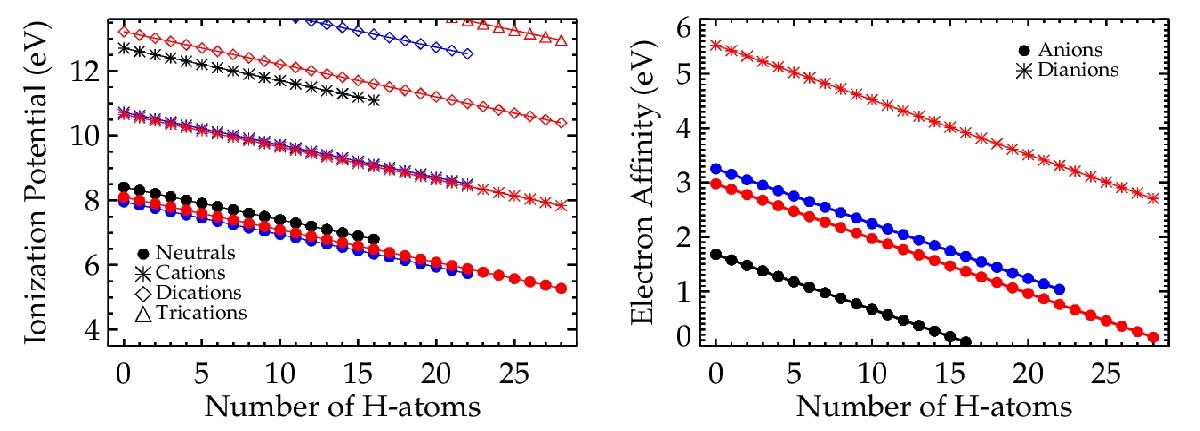Fig. 4

Ionization potentials and electron affinities assumed in our model. Energies for coronene, circumcoronene and circumcircumcoronene derivatives are shown in black, blue and red, respectively. Given that PAHs in our model can absorb photon energies up to 13.6 eV, the highest charge state for coronene derivatives is the doubly charged one (Z = 2). Circumcoronene derivatives can be doubly ionized, and only those having more than 12 H atoms can be triply ionized (Z = 3). Circumcircumcoronene derivatives on the other hand can be triply ionized, and those having more than 22 H atoms can be found in the +4 charge state. Given the uncertainty in the electron affinities for highly negative charge states (Z< −1), we do not take into account that the more dehydrogenated molecules could also exist in these highly negative states (e.g., Z = −2 for circumcoronene derivatives).
Current usage metrics show cumulative count of Article Views (full-text article views including HTML views, PDF and ePub downloads, according to the available data) and Abstracts Views on Vision4Press platform.
Data correspond to usage on the plateform after 2015. The current usage metrics is available 48-96 hours after online publication and is updated daily on week days.
Initial download of the metrics may take a while.


